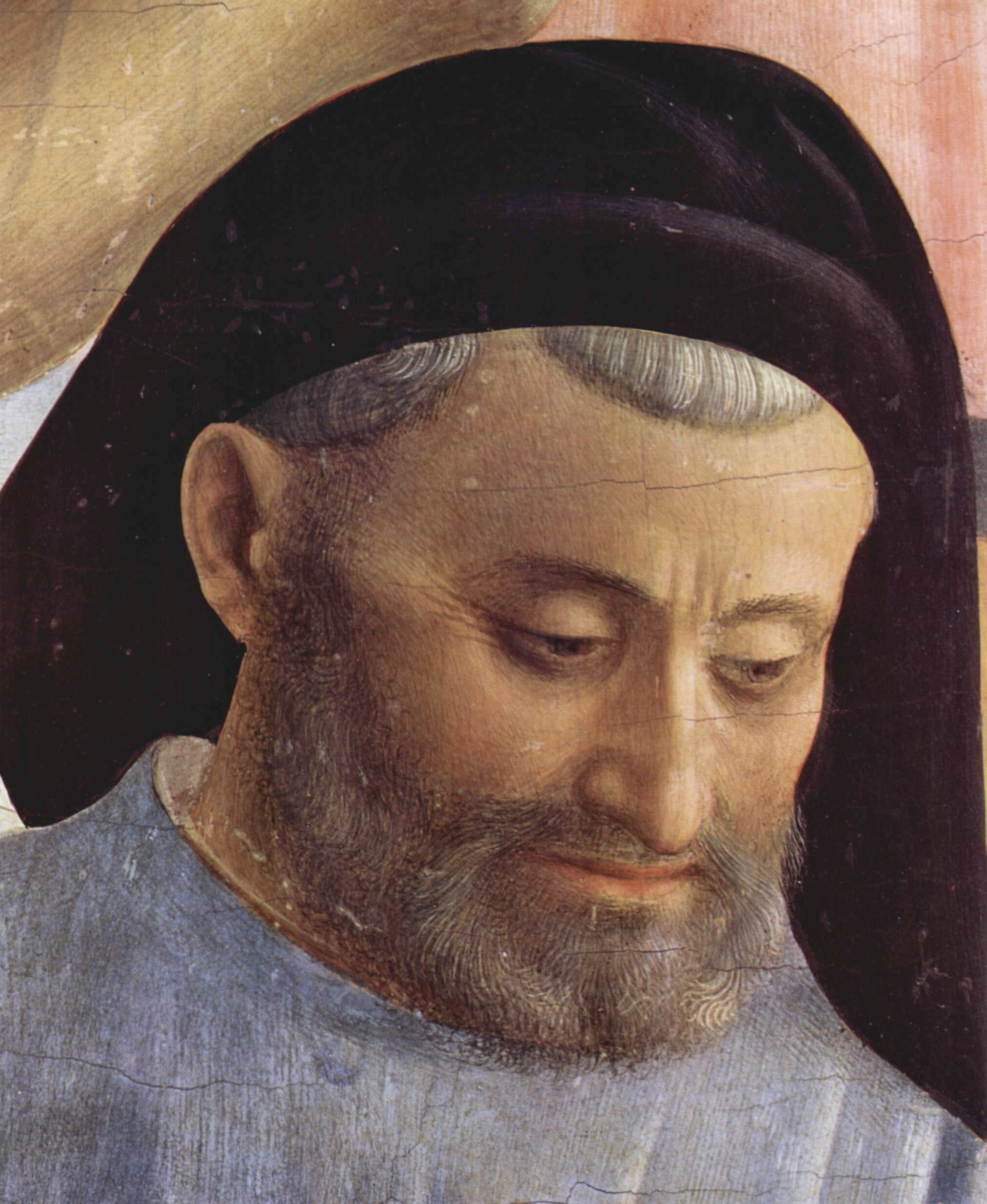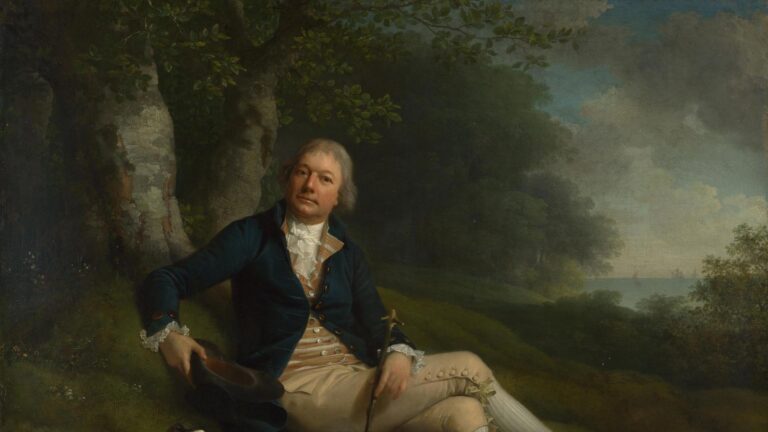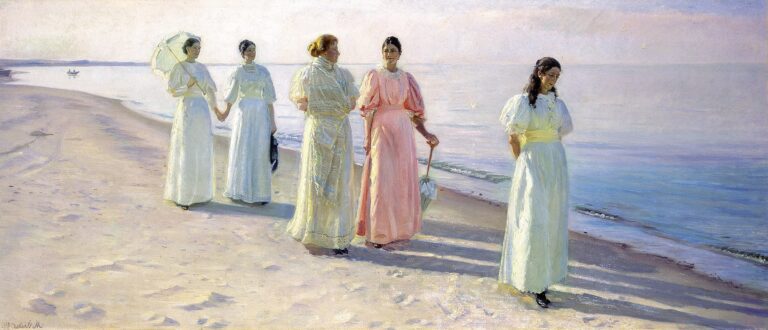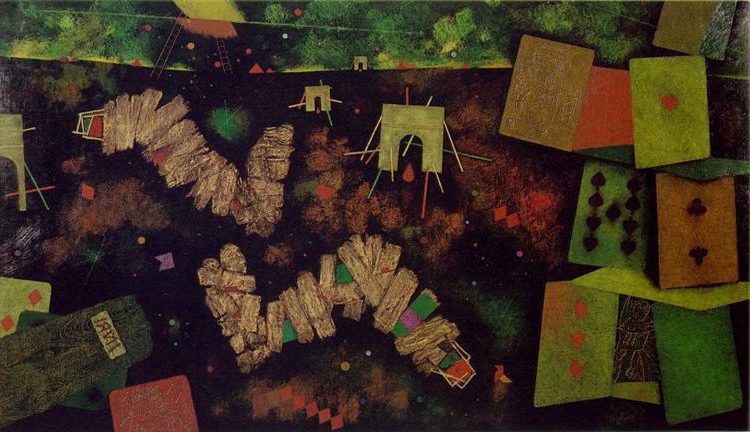Fra Angelico Paintings: Timeless Masterpieces of the Early Renaissance
Born: c. 1395 Rupecanina, Republic of Florence
Death: 18 February 1455 Rome, Papal States
Art Movement: Early Renaissance
Nationality: Italian
Patron(s): Cosimo de’ Medici, Pope Eugene IV,
Pope Nicholas V
Fra Angelico Paintings: Timeless Masterpieces of the Early Renaissance
Fra Angelico’s Artistic Contribution
Fra Angelico paintings are an important part of art history, illuminating both the Renaissance style and deep religious themes. His paintings display a unique combination of classical influences and spiritual devotion.
Renaissance Influence
Fra Angelico paintings played a vital role in the development of Renaissance art. His use of linear perspective brought depth to his paintings, a notable change in artistic style at the time.


By employing vibrant colors, he captured light and emotion, which enhanced the realism in his religious scenes.
His frescoes in San Marco, Florence, are good examples of his mastery in this area. These works helped set new standards for Renaissance art, blending older Gothic elements with fresh exploration.
Fra Angelico’s ability to combine technical skill with spiritual themes influenced many artists, including Luca Signorelli and Raphael.
Iconography and Symbolism
Fra Angelico’s paintings often centered on religious iconography with deep symbolic meanings. His works depicted sacred stories with clarity, allowing viewers to connect with the subject matter on a spiritual level.
He frequently used halos and angels with intricate designs to symbolize divine presence.
The artist’s attention to detail in representing biblical figures showed dedication to storytelling through art. Personal devotion influenced his art, as seen in the delicate expressions and gestures of his figures.
Through these methods, Fra Angelico paintings conveyed the core of Christian teachings, enriching the viewers’ understanding and appreciation of the history and meaning behind each piece.
Fra Angelico Paintings Techniques and Style
Fra Angelico’s art is celebrated for its vibrant colors and skillful depiction of space. His innovative use of light and shadow enhances the realism in his paintings, while his approach to perspective creates a sense of depth and dimension.
Use of Color and Light
Fra Angelico paintings stand out for their use of vibrant colors and luminous light effects. He often employed bright hues to emphasize the divine nature of his subjects. This approach helped him convey spiritual themes effectively.
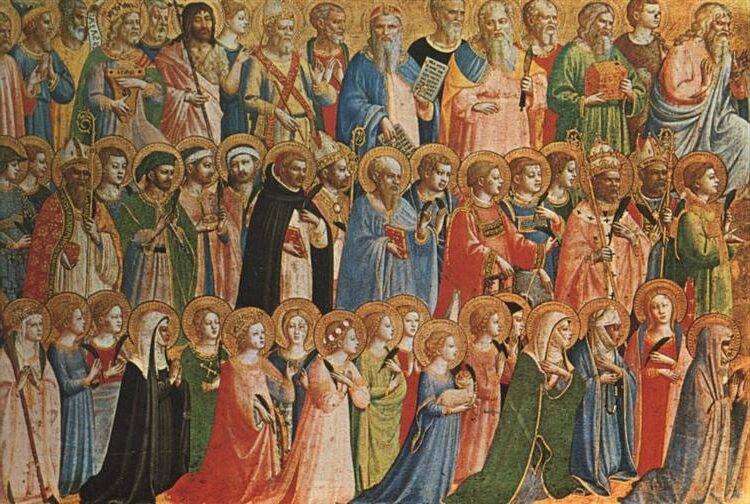
Christ Glorified in the Court of Heaven (1428–1430) by Fra Angelico
His technique with fresco painting allowed pigments to stay vibrant over time. By applying paint directly onto wet plaster, the colors bond deeply, enhancing both brightness and durability.
Angelico’s use of light was not just practical but symbolic. He harnessed it to suggest the presence of the divine, creating an ethereal quality.
Shadows and highlights were carefully balanced to maintain harmony within the composition, guiding the viewer’s eye and enhancing the emotional impact.
Perspective and Composition
Fra Angelico paintings in perspective and composition marked a shift from medieval to Renaissance styles. He utilized linear perspective to give his paintings a realistic sense of depth, allowing viewers to feel as though they are entering the scene. This was a departure from the flatness seen in earlier art forms.
He employed techniques such as creating a vanishing point, usually at eye level, drawing attention to specific figures or actions.
The meticulous arrangement of figures within the composition balanced sacred themes with geometric precision, integrating both human and divine elements in harmonious scenes.
Alongside the artistic elements, proportions of figures were carefully considered, bringing a sense of humanity and relatability to his religious subjects. This demonstrated not only technical skill but also a deeper spiritual intention.
Noteworthy Collections and Exhibitions
Fra Angelico, a key figure in early Renaissance art, is celebrated for his detailed and spiritual paintings. Major exhibitions have explored his masterpieces, reflecting on works like The Annunciation and the San Marco Altarpiece.
The Annunciation
The Annunciation is one of Fra Angelico paintings, illustrating the moment the angel Gabriel tells Mary she will bear the son of God. The artwork is renowned for its delicate use of color and light, showcasing Fra Angelico’s ability to combine spiritual themes with artistic beauty.
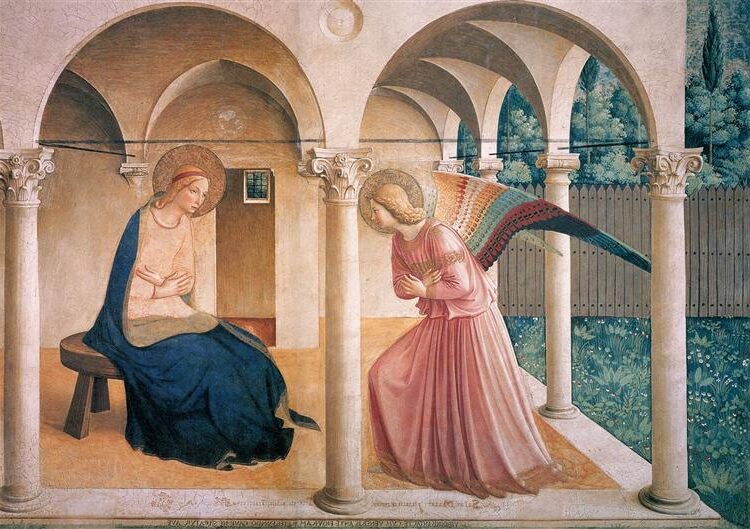
Annunciation (1442–1443) by Fra Angelico
It has been featured in notable exhibitions, including the one at the Isabella Stewart Gardner Museum in 2018, which aimed to highlight Fra Angelico’s contribution to religious art.
Fra Angelico paintings exemplifies the use of space and perspective that influenced Renaissance art, inviting viewers into a serene and divine moment. Such exhibitions offer an in-depth look at how Angelico unified spiritual depth with groundbreaking artistic techniques.
San Marco Altarpiece
The San Marco Altarpiece, created for the convent of San Marco in Florence, is another masterpiece by Fra Angelico. This work centers on a depiction of the Virgin Mary and Child, surrounded by saints, demonstrating Angelico’s skill in creating a harmonious and celestial scene.
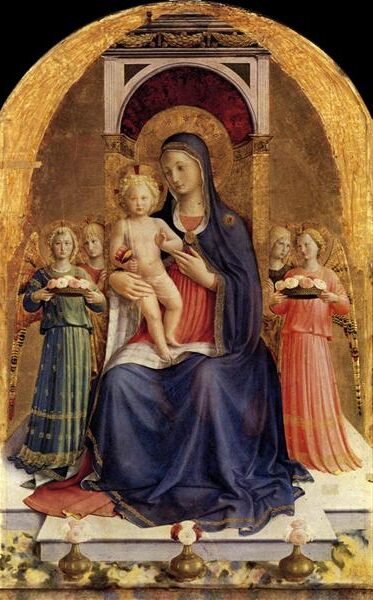
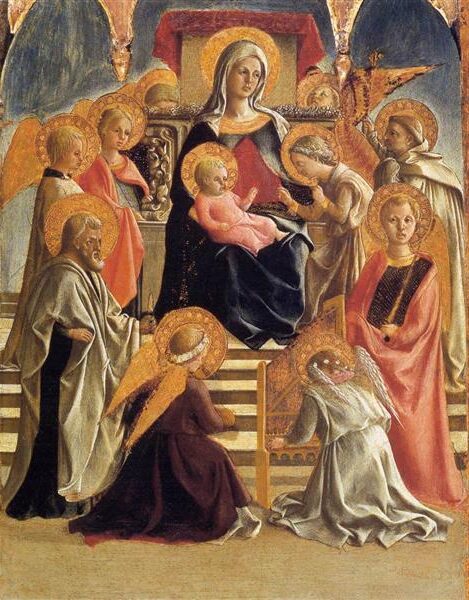
The altarpiece remains one of the highlights in the Museo di San Marco, showcasing his mastery in color and composition. This art piece is frequently studied and admired in exhibitions worldwide for its sophisticated representation of holy figures.
Visitors to such exhibitions gain insight into how Fra Angelico paintings defined and shaped religious artwork in the Quattrocento period, leaving a lasting legacy in art history.
Critical Reception and Legacy
Fra Angelico is celebrated for his pioneering contributions to early Renaissance painting. His work influenced numerous artists and continues to be revered today. Efforts have been made to preserve his masterpieces for future generations.
Influence on Later Artists
Fra Angelico paintings had a profound influence on artists of the Renaissance and beyond. He was known for his elegant portrayal of religious themes with a realistic touch.
Masaccio and other contemporaries admired his use of perspective and human anatomy. These elements were revolutionary at the time.
His frescoes in San Marco and other Italian locations inspired artists like Raphael who absorbed his technique.
They utilized Angelico’s approach to scale and color in their own compositions. The serene quality of his work provided a model for portraying biblical scenes in a humanistic way, which became a hallmark of the Renaissance.
Restoration and Preservation Efforts
Preserving Fra Angelico paintings has been a priority for scholars and restoration experts. Over the centuries, his frescoes and altarpieces have undergone numerous restoration efforts.
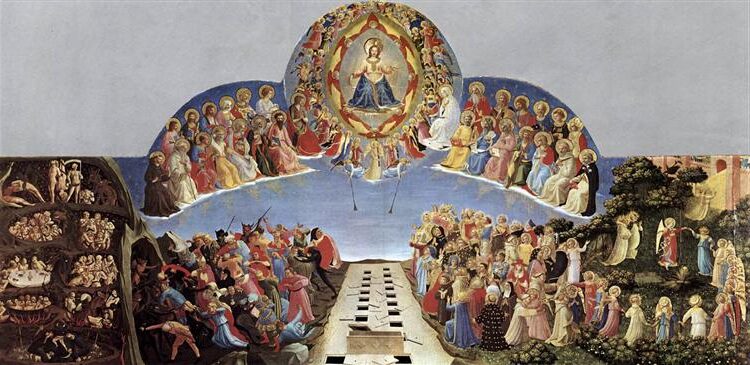
Last Judgment (c.1431) by Fra Angelico
These projects aim to maintain the original color and detail that Angelico imbued into his works.
Modern techniques and technologies, such as infrared reflectography, aid experts in identifying overpainting and previous restoration work.
Such advancements ensure the authenticity of his paintings is preserved and allows for more accurate restorations.
Venues like the Museum of San Marco in Florence are dedicated to showcasing his work, furthering both public appreciation and scholarly study.
Frequently Asked Questions
Fra Angelico, a notable figure in the Early Renaissance, brought unique contributions to art with his distinct techniques and influence on future artists. His works can still be viewed in various locations, demonstrating his impact on both religious and cultural values of his time.
How did Fra Angelico contribute to the Renaissance movement?
Fra Angelico paintings played a key role in the Renaissance by bridging Gothic art with the emerging Italian Renaissance style. He achieved this through his use of perspective and a focus on human emotion in religious settings, helping to foster a deeper spiritual connection in art.
What techniques did Fra Angelico use in his paintings?
Fra Angelico is renowned for his vibrant colors and meticulous attention to detail. He skillfully blended various artistic elements, such as light and shadow, to create harmonious compositions. His use of tempera and gold on panel added to the luminosity and depth of his work.
In which locations can Fra Angelico’s frescoes be viewed?
Fra Angelico paintings can be seen in various locations, most notably in the Convent of San Marco in Florence. His works are also displayed in other churches and museums throughout Italy, offering a glimpse into his artistic mastery.
Can you list some of the most significant works of Fra Angelico?
Some of Fra Angelico’s significant works include “The Annunciation” and “The Deposition of Christ.” These pieces highlight his skillful use of color and form, as well as his ability to convey religious stories with emotional depth.
What influence did Fra Angelico have on future artists?
Fra Angelico’s influence extended to future artists by inspiring them to explore religious themes with heightened emotion and technical precision.
His innovative approach to composition and use of vivid colors set a standard for religious art in the Renaissance and beyond.
How does Fra Angelico’s work reflect the religious and cultural values of his time?
Fra Angelico paintings reflect the religious values of his era. They emphasize themes of faith and spirituality. His work embodies the cultural shift towards humanism. Humanism sought to balance religious devotion with an appreciation for human emotion and beauty.


